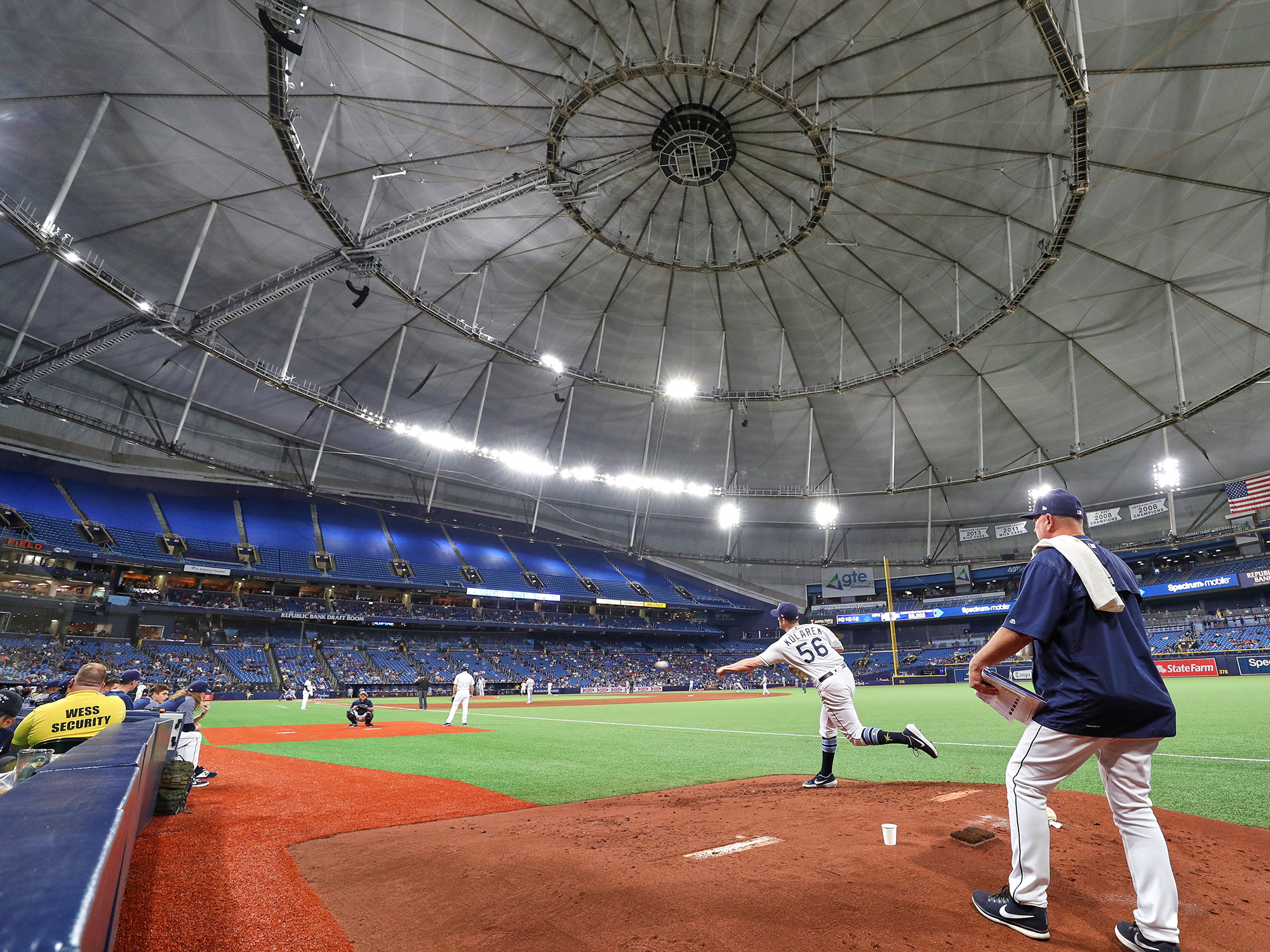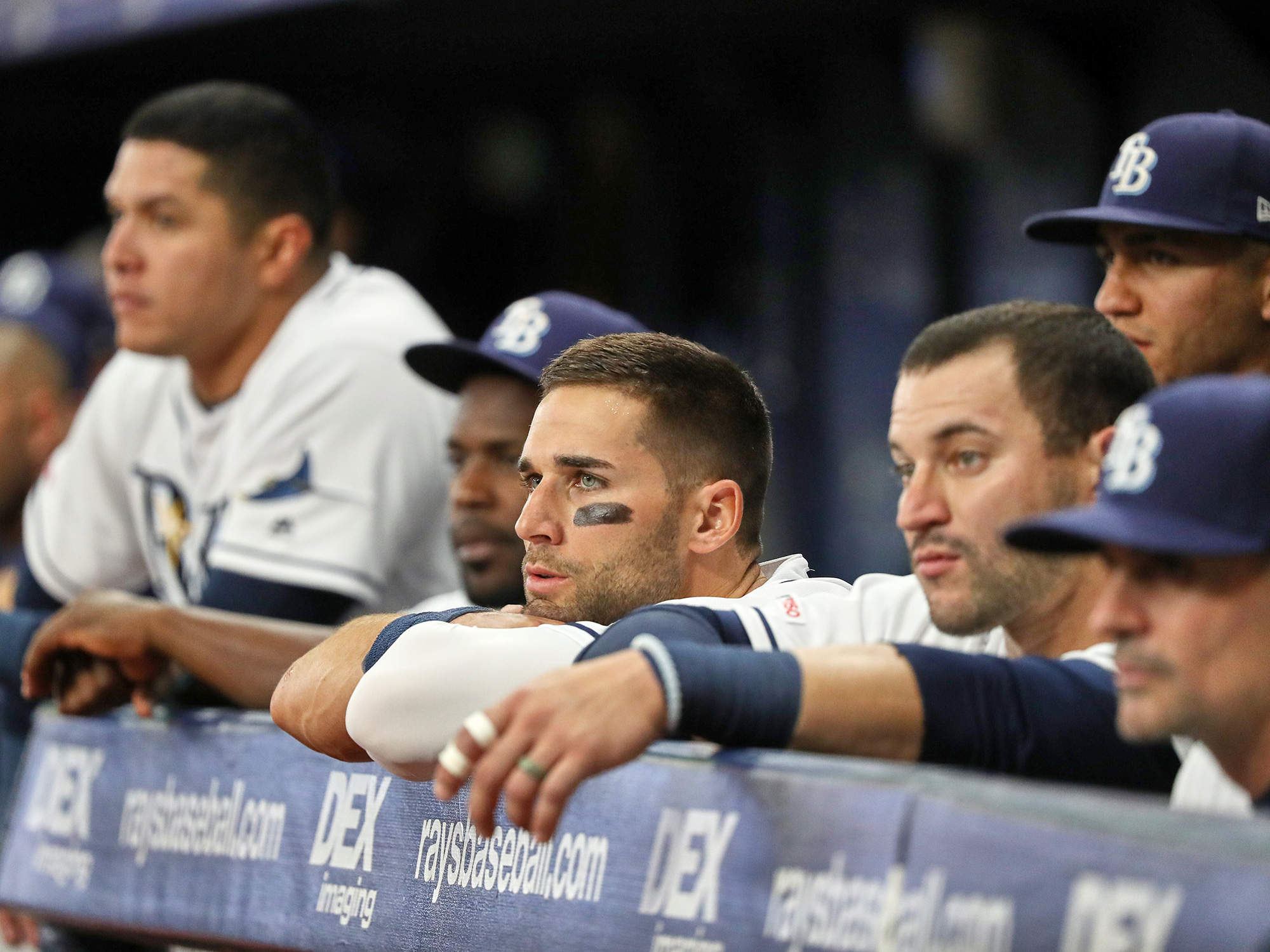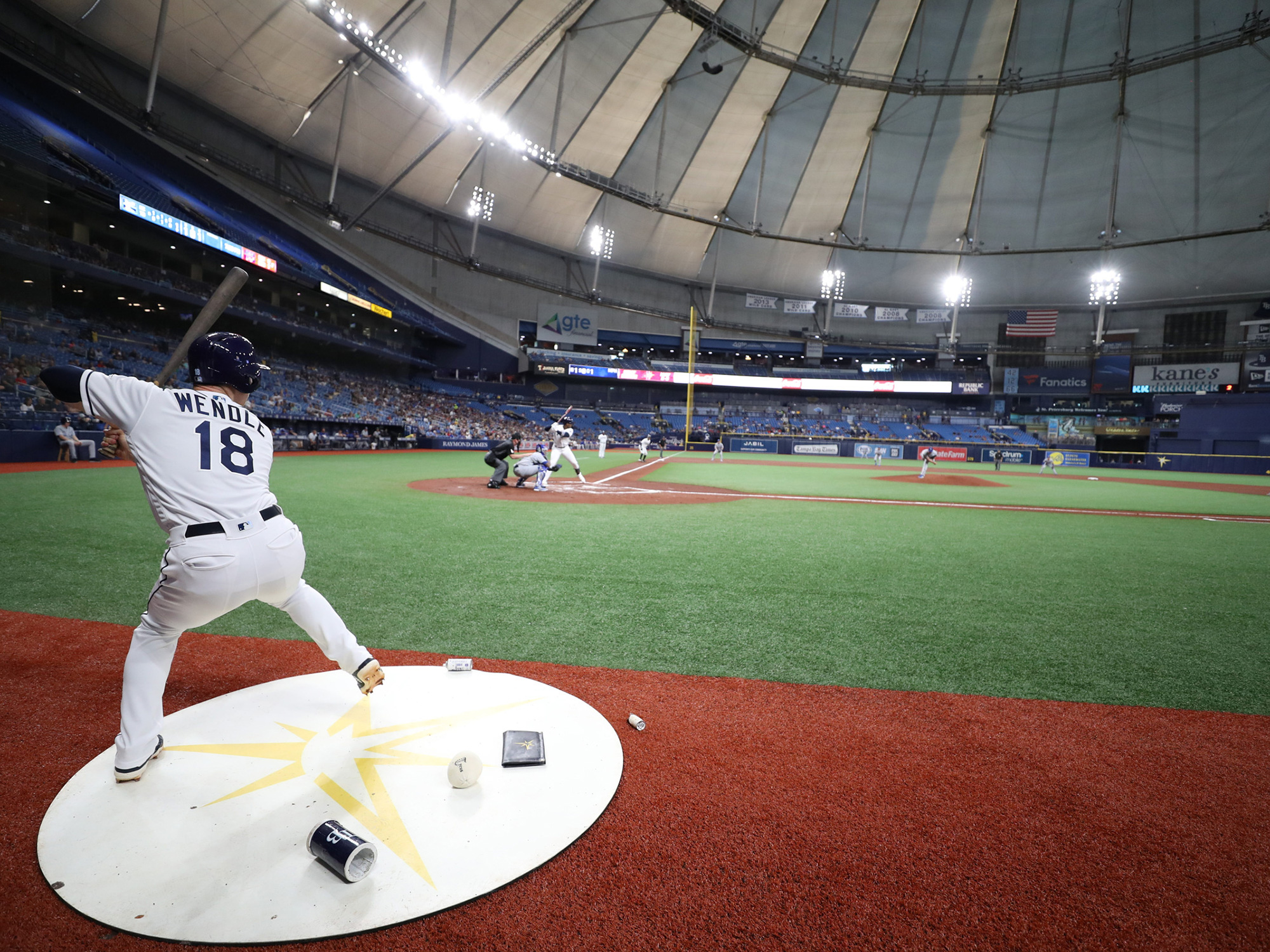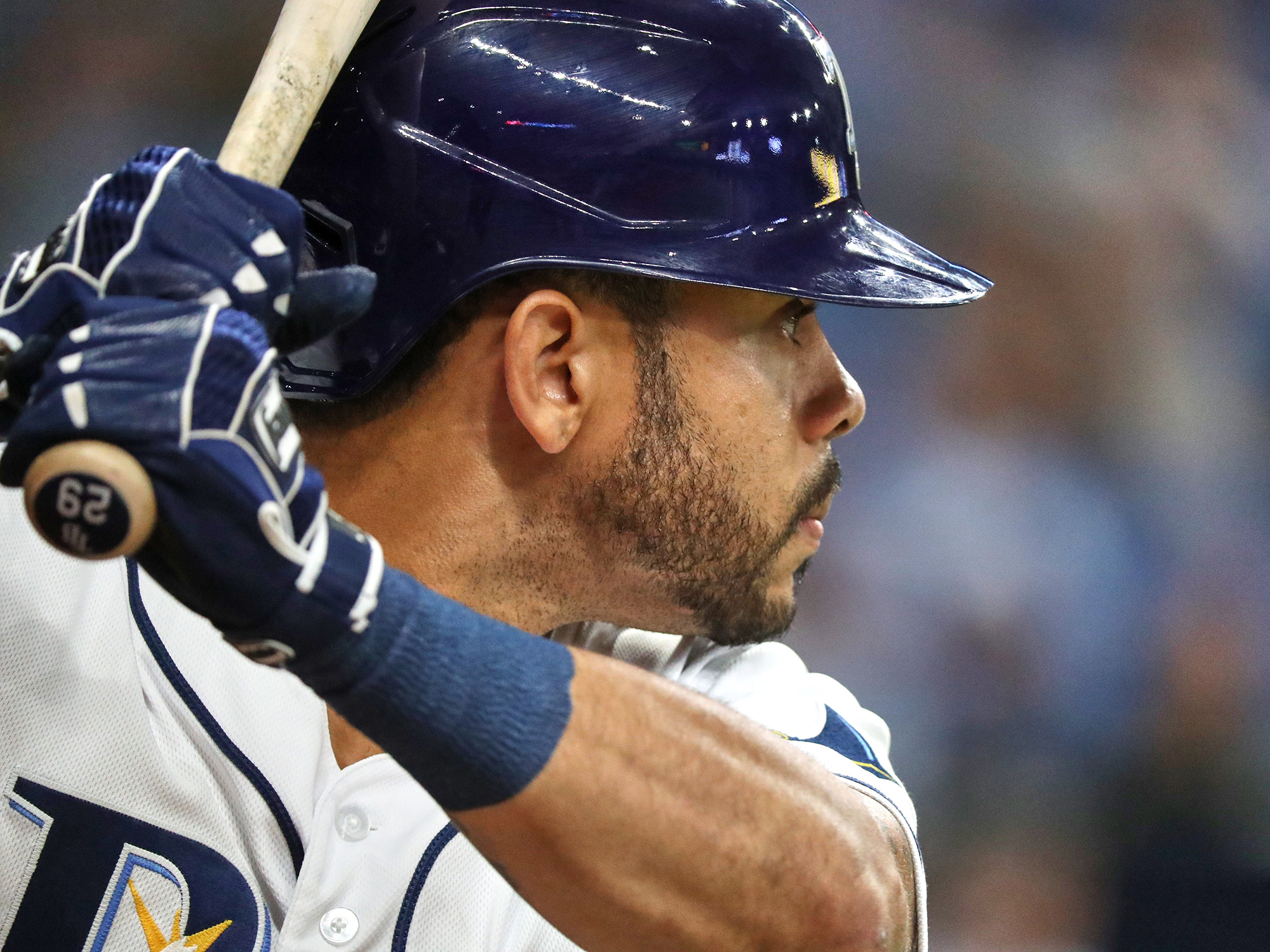The Amazing Rays: MLB's Most Innovative Team Continues Blazing New Trails

This story appears in the May 6, 2019, issue of Sports Illustrated. For more great storytelling and in-depth analysis, subscribe to the magazine—and get up to 94% off the cover price. Click here for more.
The Rays didn't always use a starting pitcher in 2018, but when they did, their best one won the Cy Young. They haven't always been active at the trade deadline, but when they were last July, they sold off their biggest names, only to catch fire in a surprising second half. And they don't always stretch their budget, but when they do ... well, O.K., they never do that. Yet they've almost always found ways to win on the cheap. Tampa Bay is, yes, the most interesting team in baseball.
And as the calendar flips to May, the Rays are looking like one of the best teams in baseball too. Their pitching is highly ranked in almost every key category; their offense, buoyed by outfielders young (Austin Meadows) and not so young (Kevin Kiermaier, Tommy Pham) is among the strongest in the game; and their 19-11 record leads the AL East. This April success follows a 90-win (albeit playoff-missing) '18 season, which might not seem like much of an achievement, except that when camp broke, the club seemed more likely to lose 90.
Baseball's most interesting team may not be its most winning (for long, anyway), most memorable or most powerful. It is certainly not the most beloved. Still, it is the most indicative of where the game is, and where it's going.

On a pitching staff, the starters start. The middle relievers relieve in the middle of the game. The setup guys set up the closer, who closes.
The game's familiar vocabulary proscribes innovation; the 2018 Rays, hoping to write something new, had to create a different language. They were trying to solve a problem that faces most every team: a pitching shortage. Behind lefty Blake Snell, who went 21-5 en route to the Cy, Tampa Bay had hardly anything, having traded away several starters for prospects and salary relief. Where another team would have looked to replenish its rotation, the Rays instead chose to change what starting pitching is.
Here comes the new dictionary. The first inning, with a team's biggest threats packed in the top of the order, produces more runs than any other. Why not give it to a would-be closer, trained to excel in short appearances under pressure? Call him the opener. After one or two frames, he'll be pulled for a pitcher who would otherwise be a starter who's now able to work deeper into the game, his exposure to the best hitters reduced. He's a bulk guy or primary pitcher.
The Rays relied on an opener for more than a third of their games; using that strategy, they went 32-23, a .582 winning percentage that was better than their mark with conventional pitching (.542). Even with a stronger rotation in 2019—beefed up by the addition of Charlie Morton and the development of Tyler Glasnow—the team has continued to use it. A handful of other clubs picked up the strategy in the second half of last season; the same could happen this year as pitching injuries pile up.
The approach made plenty of sense on a spreadsheet. But it's one thing to push a cell's contents from column to column; it's another to ask a pitcher to produce reliably after breaking his routine. (It's a lot for a pitching coach, too: Ask Kyle Snyder about a typically straightforward task like, say, scheduling bullpen sessions and you'll hear, "It's hard to answer the same way 29 other pitching coaches would.") Statistical analysis may have given rise to the opener, but its implementation was psychological, social, emotional. General manager Erik Neander says Tampa Bay's staff felt like a fit for the experiment in part because of its youth. "In many ways, disruption can help a young player find success," he says.
Ryne Stanek was the team's most frequent opener in 2018, with 29 "starts" that lasted a total of 40 innings. The righthander was suited to the role of guinea pig circumstantially—it was his first full season in the majors, so he had fewer routines to break—and temperamentally. He's an easygoing guy who sports a tie-dyed headband to keep his flowing blond locks out of his face during workouts.
Stanek found that his new challenge wasn't so imposing. He now had advance knowledge of his duties, which as a reliever he had lacked. He had also started in college, at Arkansas. "It was kind of just like stepping back into something that I was comfortable doing," he says. "It was a little bit of a relaxing thing for me." Stanek struck out nearly a third of his opponents and finished with a 2.98 ERA, and he's on a similar pace in 2019.
The Rays have no similarly identifiable hitting innovation, but that doesn't mean they aren't trying new things. You just have to see them before the first pitch. "Traditional BP doesn't work," says hitting coach Chad Mottola. "From Day One, I knew that was wrong, and we're trying to discover ways that are right." There's a general focus on velocity, "trying to do everything harder," Mottola says. (This part is working: Tampa Bay's hard-hit rate, per Statcast data, is 43.5%, second best in MLB.) Mottola uses varying approaches for practice—one day he might have a series of fences up in the field, inviting hitters to shake up their approaches by focusing on sending the ball to a given fence; another, he might work exclusively with high-velocity pitching machines.
Mottola says the Rays are trying to change players' emotional response to practice, too: "Back in the day, coaches would want to have you fail just to make you feel bad. I want to present failure in a different way. It's a way to discover things, and that's the fun part."

Until he was suiting up to head into a major league dugout for the first time, Jonathan Erlichman, 29, had never worn a baseball uniform. Not a real one, anyway: The Toronto native had played T-ball but dropped the game before he was old enough to graduate from a T-shirt to a jersey. Instead, he focused on hockey until he went to Princeton, where he studied mathematics. Fresh out of college, he took an internship in the Rays' front office. After four seasons he was named director of analytics, a role he held for two more years. Last spring the Rays put him in the dugout for a few games, and the experiment worked well enough that this season, he put on the team's uniform for good.
Erlichman is MLB's first process and analytics coach. The team expects the gig to evolve through the season; so far he has sometimes focused on pitching and sometimes on hitting, sometimes worked with players and sometimes with other staff.
Erlichman's focus isn't on in-game strategy. Instead he's providing a different perspective on the team's preparation (the "process" part of his title) and identifying where new data can help most ("analytics").
As a coach in uniform, Erlichman is hard to dismiss as a clubhouse interloper—a fate front-office quants have often met. "Being there every day will help create some more organic conversations," Erlichman says. "It's not about having presentations." He'll just be there, a daily presence for players to get used to and, eventually, potentially, to trust.
"He's going to be my favorite coach," outfielder Pham, who's a fan of advanced metrics, said this spring. "I think, pretty soon, every team's going to be doing this."

The last time the Rays were any good—and, lest we forget, they were very good, with four playoff appearances and a .565 winning percentage (second best in MLB) from 2008 to '13—their success came from homegrown stars. Evan Longoria, Carl Crawford, David Price, James Shields: all were drafted by the then Devil Rays.
This iteration, Snell and Kiermaier aside, has been cobbled together with other techniques: trades (Pham, infielder Joey Wendle, shortstop Willy Adames) and even some short-term, small-dollar free-agent signings (Morton, outfielder Avisaíl García).
"Realistically, not everything is going to go as well and not every bounce is going to go our way, the way that it did last year," Neander says. "It's not something where you win 90, you have a young team, therefore you win 95, you know?"
No matter how much luck was involved, the team's overperformance in 2018 changed the organizational timeline. Looking at the Rays' transactions last year, you would have guessed that they were entering a fallow period. A few days before the team's first full squad workout the front office flipped Jake Odorizzi, its No. 3 starter, for a minor leaguer. Outfielders Corey Dickerson and Steven Souza Jr., two of the 2017 team's best hitters, were sent packing in separate deals. (The off-loading of closer Alex Colomé, outfielder Denard Span, catcher Wilson Ramos and starting pitchers Nathan Eovaldi and Chris Archer would follow during the season.)
"The trades early in spring last year personally had me very upset, and I think I'm speaking for a lot of other guys," says Kiermaier, whose six seasons with the club make him its longest-tenured veteran. "Those were really good players and really good teammates.... It stung."
As always, though, winning was a balm. While last winter brought a new approach—adding rather than shedding—their farm system remains their greatest resource. Baseball America and Baseball Prospectus both rate it as second only to the Padres'. A few highly rated prospects should graduate to the majors this year, with more in 2020 and still more in '21. Brent Honeywell could be the first screwball pitcher in decades; Brendan McKay could be a two-way star à la Shohei Ohtani; Wander Franco could be a teenage phenom at shortstop—and the Rays have plenty of talent behind them. If 2019 seems bright, well, 2021 will be that much brighter.

So this is baseball's most interesting team, with a radical strategy on the field, a quant in the dugout and a bounty down on the farm. But what are the Rays here to do?
To win? That's the easy answer, and it certainly isn't wrong. But it is incomplete. More emphatically than any other team, the Rays want to win without spending. Long plagued by poor attendance, they have drawn just 16,240 fans per game over the last six years, finishing last in the American League in five of them. Their lease at ghastly Tropicana Field runs through 2027, and given the collapse last year of a proposal to build a stadium in the Ybor City neighborhood, they'll likely fulfill it. They're entering Year 14 under the ownership group led by Stuart Sternberg; in 11 of those seasons they've had one of the three smallest payrolls in baseball. The 2019 Rays fit right in with an MLB-low outlay of $61.5 million, less than half of the league-average figure. Everything that makes them interesting—the opener, front-office wizardry, tantalizing prospects—helps Tampa Bay pursue victories and keep this number absurdly small.
The MLB Players Association filed a grievance against the Rays last February, shortly after their spring training salary dump, alleging that they had failed to spend their estimated $45 million in revenue-sharing payments to improve the club. But the Rays did improve. They just didn't spend.
In a moment of broader tension between players and management, Tampa Bay is a tricky case. What does it mean when a team is doing everything it can to succeed on the field—everything except spending money on players? In recent years, teams have increasingly embraced the idea that organizational spare parts, properly developed, bring more value than veterans. What happens when this concept is pushed to the extreme? What happens when spare parts can hang with the Yankees and the Red Sox?
The problem with winning is that someone has to lose: Every bit of success the Rays' players have on the field may well make it that much harder for the players, as a whole, to advocate for themselves. The locals may not be paying attention, but baseball sure is.
